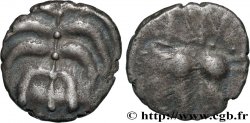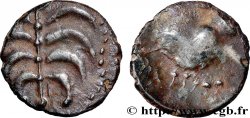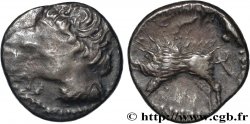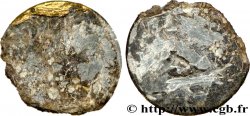v15_1373 - HELVETII (Currently Switzerland) Quart de statère, au triskèle
MONNAIES 15 (2002)
Starting price : 335.00 €
Estimate : 750.00 €
unsold lot
Starting price : 335.00 €
Estimate : 750.00 €
unsold lot
Type : Quart de statère, au triskèle
Date: c. 150-80 AC.
Metal : gold
Diameter : 10,5 mm
Orientation dies : 11 h.
Weight : 1,97 g.
Rarity : R3
Coments on the condition:
Monnaie de fabrication très grossière, frappée sur un flan irrégulier et épais
Obverse
Obverse legend : ANÉPIGRAPHE.
Obverse description : Tête stylisée à gauche, d’un traitement angulaire.
Reverse
Reverse legend : ANÉPIGRAPHE.
Reverse description : Cheval bridé à gauche, la roue du char derrière lui surmontée d’un bige filiforme semblant presque allongé avec les bras en avant.
Commentary
Ces quarts de statères sont très rares et particulièrement mal connus. Cet exemplaire semble être de même coin de revers (et peut-être de droit) que l’exemplaire du Musée de Besancon, reproduit dans la RSN. 53, 1974, page 62, pl. 13, n° 127. Exemplaire d’un poids lourd, qui donnerait un statère de 7,88 grammes.








 Report a mistake
Report a mistake Print the page
Print the page Share my selection
Share my selection Ask a question
Ask a question Consign / sell
Consign / sell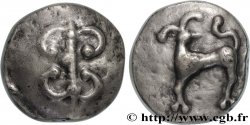
 Full data
Full data